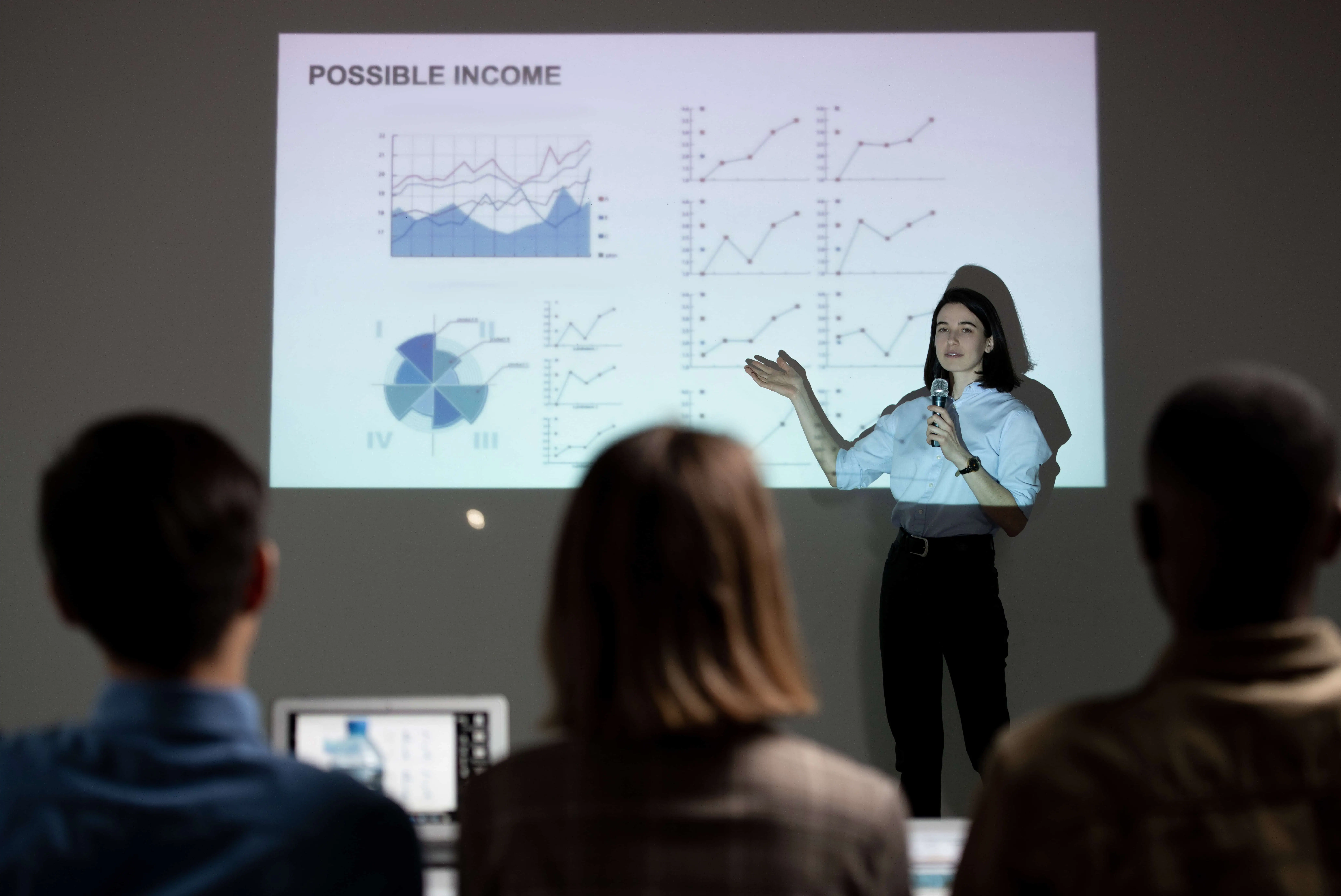The New Innovative Metrics to Measure Social Media Success Beyond Likes and Shares
In the dynamic world of social media, where likes and shares no longer paint the full picture, we’ve gathered insights from CEOs and marketing experts. They delve into new metrics and tools, from assessing post reach impact to incorporating sentiment analysis and social listening. Discover the twelve innovative strategies these professionals are using to measure...
Valentina Jarsun
July 11, 2024
CONTENTS
In the dynamic world of social media, where likes and shares no longer paint the full picture, we’ve gathered insights from CEOs and marketing experts. They delve into new metrics and tools, from assessing post reach impact to incorporating sentiment analysis and social listening. Discover the twelve innovative strategies these professionals are using to measure social media success today.
Assess Post Reach Impact
This is overlooked by most social media experts, but post reach is very crucial, especially if you are trying to understand the true impact of your content and are trying to do viral marketing. Post reach measures how many unique users have seen your post, providing a clearer picture of your audience size and content visibility.
Unlike engagement metrics that indicate interaction levels, post reach helps identify whether your content is effectively penetrating your target market and guides adjustments to your content strategy for broader exposure.
Tristan Harris, Demand Generation Senior Marketing Manager, Thrive Digital Marketing Agency: “Understanding post reach is vital for assessing the effectiveness of viral marketing campaigns.”
Track Website Clicks and Value
One way we track the impact of organic social media, beyond simply likes, shares, and followers, is through website clicks. Assigning a monetary value to this (e.g., the average CPC for LinkedIn advertising) enables us to showcase results to leadership in a way that shows how much it would have cost with paid social.
Emily Neal, Marketing Manager, DSMN8: “Quantifying website clicks provides a clearer picture of the financial impact of social media efforts.”
Measure Social Share of Voice
We’ve started using a metric known as Social Share of Voice (SSoV) to measure our social media success beyond just likes and shares. This awareness metric compares the volume of conversations about our brand to those about our competitors.
The more people talk about our company online, the better our channels perform. By combining this metric with social media sentiment analysis, we can understand who is discussing our company and how our audience feels about us. I personally believe that Share of Voice is the pinnacle of our social media analysis.
To track this, we utilize media monitoring tools to measure our share of voice on social media. For instance, as a brand involved in technology, we aim to be a prominent part of conversations within the tech community on social media, SaaS, and tech in general. Therefore, a higher Social Share of Voice indicates that we are leading discussions in our industry.
Precious Abacan, Marketing Director, Softlist: “Tracking Social Share of Voice helps us understand our position in the industry and improve our strategies accordingly.”
Focus on Engagement Rate by Reach
As the founder of MBC Group, transitioning to AI-driven marketing solutions has revolutionized how we measure social media success beyond likes and shares. One new metric we focus on is Engagement Rate by Reach (ERR). This helps us understand the quality of interactions relative to the total number of people who see our posts. For example, after implementing content tweaks based on ERR insights, we saw a 50% increase in meaningful interactions within a month.
We’ve also adopted Sentiment Analysis using tools like Brandwatch to monitor the emotional tone of interactions. During a client campaign, quick adjustments based on sentiment analysis significantly turned negative feedback into positive engagement, resulting in a 35% increase in positive mentions in just a few weeks. Real-time sentiment data allows us to be highly responsive and agile in our marketing strategies.
Furthermore, we’ve integrated Customer Lifetime Value (CLV) tracking with our CRM systems to correlate social media activities with high-value customers. This was particularly effective when working with a diagnostic imaging company, where optimizing social campaigns based on CLV data boosted their Customer Lifetime Value by 15%. Higher CLV from social engagement shows sustainable business growth beyond mere follower counts.
Matthew Montez, Founder, The MBC Group: “Engagement Rate by Reach and CLV tracking have provided us with deeper insights into the true impact of our social media efforts.”
Analyze Sentiment and Tone
At our organization, we’re moving beyond basic engagement metrics to analyze the sentiment and tone of social media interactions. Using AI-powered tools like Brandwatch, we monitor and evaluate the sentiment of comments and mentions across platforms. This allows us to understand not just the volume of interaction but the quality and context of the conversation around our brand.
Such insights help us tailor our content more effectively, ensuring it resonates positively and aligns with audience sentiments. This approach has given us a deeper understanding of our brand’s health in the digital space and allows us to adjust strategies proactively.
Jason Hennessey, CEO, Hennessey Digital: “Analyzing sentiment and tone helps us stay aligned with our audience’s emotions and perceptions.”
Evaluate Engagement Quality Metrics
To measure social media success beyond likes and shares, focus on engagement quality metrics. Instead of just counting likes, look at how people interact with your content. Are they leaving thoughtful comments, asking questions, or sharing their experiences? These types of interactions offer deeper insights into how well your content resonates with your audience.
Use sentiment analysis tools to go a step further. These tools analyze the language used in comments and messages to determine whether the feedback is positive, neutral, or negative. This helps you understand the emotional impact of your social media efforts. Quality engagement and sentiment analysis together offer a richer, more nuanced picture of your social media performance than basic metrics ever could.
Will Yang, Head of Growth and Marketing, Instrumentl: “Quality engagement metrics and sentiment analysis provide a comprehensive view of social media performance.”
Monitor Conversion Rates
Engagement quality and conversion rates are now key metrics for measuring social media success. Tools like Google Analytics and Hootsuite help track user interactions, website traffic, and sales conversions originating from social platforms.
These metrics provide a deeper understanding of audience behavior and campaign effectiveness. By focusing on meaningful engagement and actual business outcomes, we can refine our strategies to better meet our goals and drive tangible results.
David Wilfong, Founder and CEO, DavidWilfong: “Focusing on conversion rates ensures that our social media efforts translate into real business outcomes.”
Prioritize Audience Ranking
Audience ranking is key to measuring social media performance today. While likes, shares, and engagement are easy to monitor, taking it a step further and creating a system that evaluates where interactions are originating is crucial.
For example, business-to-business interaction should be rated lowest. While it’s good to be noticed by your peers, keep in mind that they are rarely your customers. You are both online for the same reason, and that’s promotion. Their comments are typically quid pro quo and exist only to ensure you interact back with them.
The highest-ranked interactions, on the other hand, come from existing or potential customers. AI can help you distinguish these from others by searching profiles for keywords. The more these valuable accounts engage with yours, the more likely you are to see business growth, so pay close attention to which posts attract these social media users.
A ranked follower metric allows you to maximize the success of your campaigns and save time through prioritization.
Rob Reeves, CEO and President, Redfish Technology: “Audience ranking helps us prioritize valuable interactions and focus on potential customers.”
Analyze User Engagement Duration
Currently, “user engagement duration” has become a key metric for us. With the help of tools like Hotjar, we analyze how long users who come from our social media stay on our site and what actions they take. This not only measures the effectiveness of our social media in driving interested traffic but also helps gauge the quality and relevance of the content we are promoting.
Tracking how long users engage with our content after a social interaction provides insights into user interest and content value, helping us refine our strategies to maximize engagement and retention.
Marc Bishop, Director, Wytlabs: “User engagement duration offers valuable insights into content effectiveness and user interest.”
Examine Clicks and Comments
In today’s dynamic social-media landscape, I’m focusing on metrics that offer deeper insights into engagement and conversion. Beyond likes and shares, clicks are crucial as they indicate initial interest and a willingness to learn more.
Tracking comments reveals the level of direct interaction and user engagement with content. Built-in analytics tools like Facebook Insights and Twitter Analytics provide valuable data on reach, impressions, and overall engagement rate. These tools enable me to analyze which types of content resonate most effectively with the audience and foster meaningful interaction.
Valentin Radu, CEO, Founder, Blogger, Speaker, and Podcaster, Omniconvert: “Clicks and comments provide deeper insights into user engagement and content resonance.”
Track User Journey Complexity
User Journey Complexity is a metric we’ve begun to monitor, which tracks the number of touchpoints a user interacts with before taking a decisive action, such as signing up or making a purchase.
By mapping out these touchpoints, we utilize tools like social media analytics, combined with behavior flow analysis within our website analytics, to see how social media contributes to the complexity of the user journey. This detailed mapping allows us to identify any unnecessary or overly complex steps that could be discouraging user conversions.
By streamlining these processes, we not only enhance user satisfaction but also increase the likelihood of converting interactions into tangible outcomes. This approach makes our marketing efforts more efficient and tailored, ensuring that every touchpoint adds value to the user’s journey and brings them closer to our product.
Alari Aho, CEO and Founder, Toggl Inc: “Mapping user journey complexity helps us streamline processes and improve conversion rates.”
Incorporate Sentiment Analysis and Social Listening
In addition to traditional metrics, we have incorporated user sentiment analysis and social listening into our toolkit to gauge social media success more effectively. Sentiment analysis uses AI tools to assess the tone and emotions behind social media comments and mentions. This gives us insights into how our audience perceives our brand and can alert us to shifts in public sentiment that could affect brand reputation.
Social listening, on the other hand, extends beyond our direct interactions and gathers data on broader conversations involving relevant keywords and topics. This helps us understand industry trends and audience interests, allowing us to create more targeted and resonant content.
These tools are invaluable, providing a more holistic view of our social media impact beyond engagement numbers.
By understanding both the quantitative and qualitative aspects of our social interactions, we can better tailor our content and campaigns to meet our audience’s needs and preferences. As a result, we maintain a positive brand image and foster a more engaged and loyal community online.
Sahil Kakkar, CEO and Founder, RankWatch: “Sentiment analysis and social listening provide a holistic view of our social media impact and audience perception.”
More posts
5 Secrets to Succeeding in a Competitive Financial Environment
Among the most demanding and fast-paced industries of the modern economy is the financial one. From stock markets to fintech…

Advanced Targeting Strategies for Instagram Ads: Reaching Your Niche Audience
Instagram has evolved into a powerhouse for advertisers looking to connect with a diverse and engaged audience. However, as the…

Innovative Strategies for Scaling Your Brand in a Competitive Market
Scaling a brand in today’s competitive market requires more than just traditional marketing techniques. It demands innovative strategies, creative thinking,…


